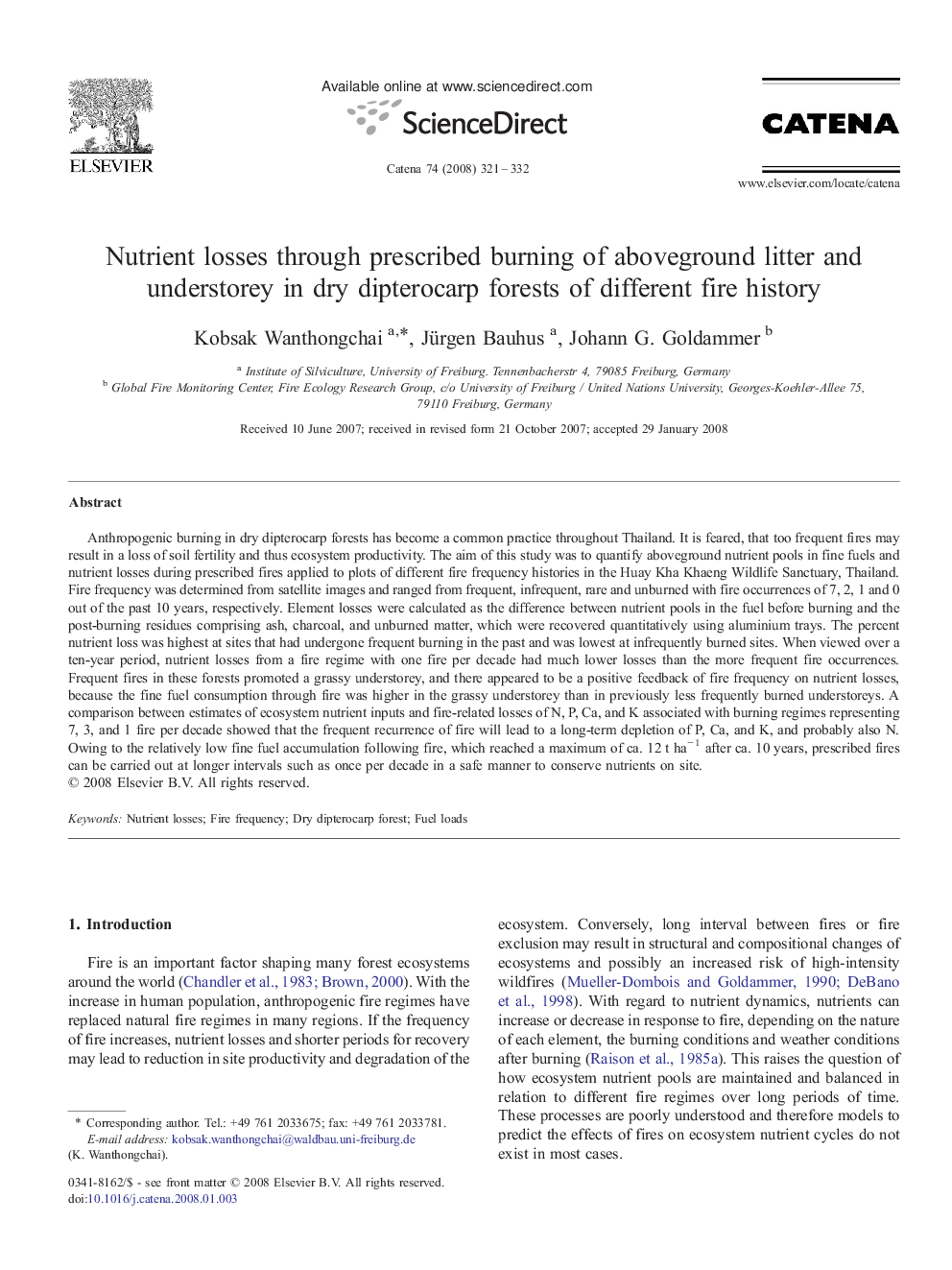| کد مقاله | کد نشریه | سال انتشار | مقاله انگلیسی | نسخه تمام متن |
|---|---|---|---|---|
| 4572352 | 1332170 | 2008 | 12 صفحه PDF | دانلود رایگان |

Anthropogenic burning in dry dipterocarp forests has become a common practice throughout Thailand. It is feared, that too frequent fires may result in a loss of soil fertility and thus ecosystem productivity. The aim of this study was to quantify aboveground nutrient pools in fine fuels and nutrient losses during prescribed fires applied to plots of different fire frequency histories in the Huay Kha Khaeng Wildlife Sanctuary, Thailand. Fire frequency was determined from satellite images and ranged from frequent, infrequent, rare and unburned with fire occurrences of 7, 2, 1 and 0 out of the past 10 years, respectively. Element losses were calculated as the difference between nutrient pools in the fuel before burning and the post-burning residues comprising ash, charcoal, and unburned matter, which were recovered quantitatively using aluminium trays. The percent nutrient loss was highest at sites that had undergone frequent burning in the past and was lowest at infrequently burned sites. When viewed over a ten-year period, nutrient losses from a fire regime with one fire per decade had much lower losses than the more frequent fire occurrences. Frequent fires in these forests promoted a grassy understorey, and there appeared to be a positive feedback of fire frequency on nutrient losses, because the fine fuel consumption through fire was higher in the grassy understorey than in previously less frequently burned understoreys. A comparison between estimates of ecosystem nutrient inputs and fire-related losses of N, P, Ca, and K associated with burning regimes representing 7, 3, and 1 fire per decade showed that the frequent recurrence of fire will lead to a long-term depletion of P, Ca, and K, and probably also N. Owing to the relatively low fine fuel accumulation following fire, which reached a maximum of ca. 12 t ha− 1 after ca. 10 years, prescribed fires can be carried out at longer intervals such as once per decade in a safe manner to conserve nutrients on site.
Journal: CATENA - Volume 74, Issue 3, 15 August 2008, Pages 321–332